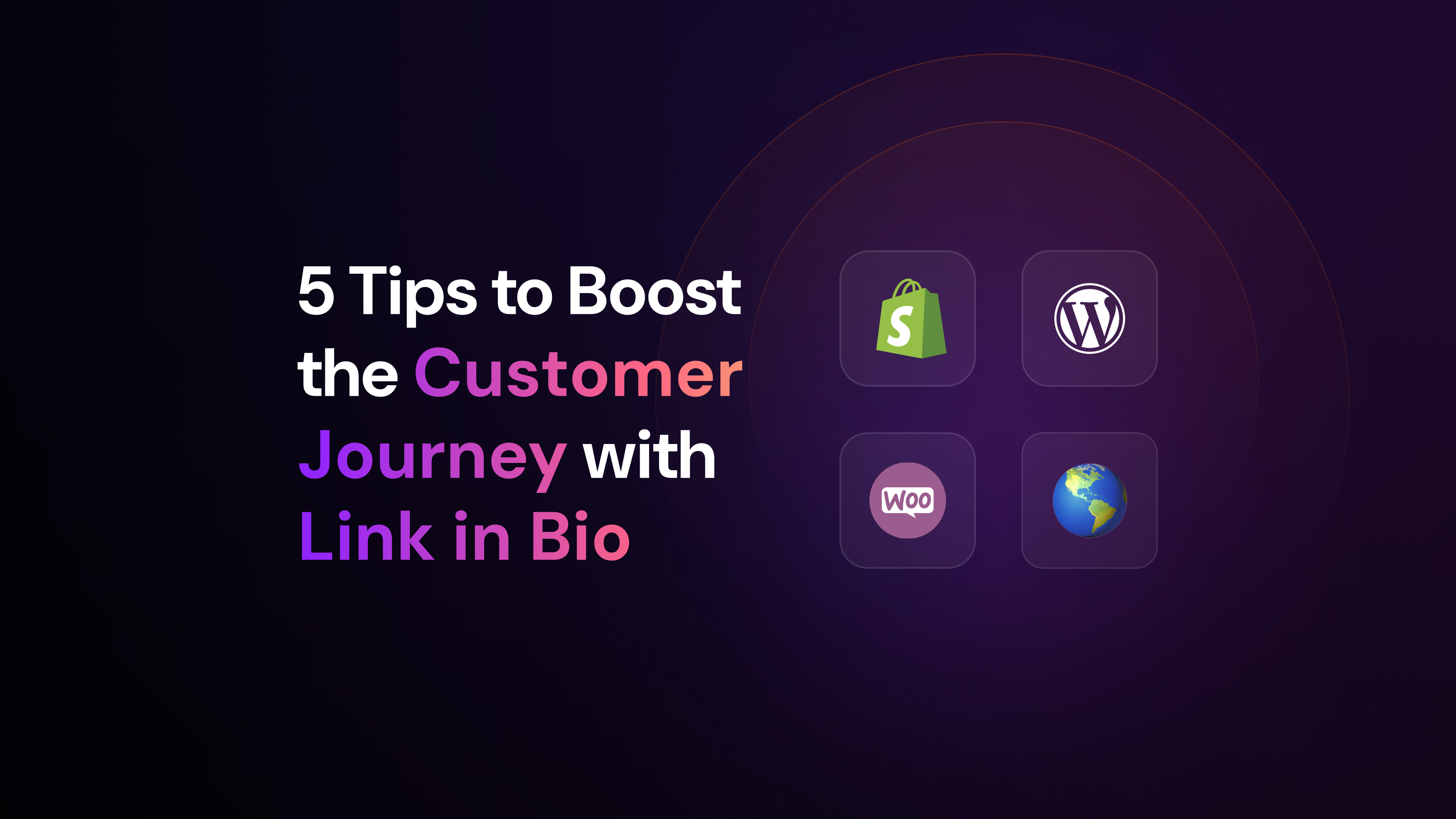Using a Customer Data Platform is helping companies to focus obsessively on their customers and benefit from their engagement.
You need to know your customers—this isn’t any news. It doesn’t matter if you want to make them more engaged, optimize your budget for campaigns, or improve your ROI.
Customer accurate information is at the heart of every company and should be treated correctly to generate powerful outcomes from your marketing efforts.
If you don’t have a consistent understanding of your consumers, then all your strategies will likely go down the drain.
But how exactly do you get to act like you know your customers? The answer is simple: by managing their data.
To treat data thoroughly and reach your customer relationship goals, you might come across the need to use the right technologies. This is when the Customer Data Platform (CDP) walks in.
A customer data platform monitors and tracks multiple data sources to bring relevant information to a single hub that is easy to access and understand.
#Subscribe and stay on top of the news on our blog
Once implemented, CDPs collect, integrate, manage, and analyze customer data continuously. These automated processes help many teams to focus on solving complex problems that require a human brain. At the same time, a Customer Data Platform brings current, real-time data to be leveraged and turned into marketing master plans.
What is a Customer Data Platform (CDP)?
A Customer Data Platform is not just another tech tool; it’s a strategic asset. CDPs gather and organize data from multiple channels, providing a unified view of customer interactions, preferences, and behaviors. This comprehensive profile enables businesses to engage customers with personalized, relevant content.
Examples of CDPs
- Salesforce CDP: Integrates data from sales, service, marketing, and commerce for a holistic customer view.
- Adobe Experience Platform: Offers real-time profiles and insights for personalized experiences.
- Segment: Focuses on data collection and management, facilitating deep analysis through various tools.
Why do companies use Customer Data Platforms?
Is there a reason why companies implement a Customer Data Platform in their business models? Yes, many.
According to Gartner, plenty of marketers look to customer data-driven strategies to deliver growth. For example, marketers invested two-thirds of their budget in supporting relationships with their customers in 2017 and 2018.
Still, they have found the technology they were using to be frustrating—until CDP’s unique upshots came out as a solution to their problems.
A Customer Data Platform reaches out for several channels and concentrates real-time data in a single place your team can access whenever it is convenient.
This stimulates a collaborative work environment and speeds the pace of operational routines. Customer Data Platforms are also known for making marketers’ lives less complicated since automating workflows would take too many working hours to be accomplished.
The other reason companies use Customer Data Platforms is that they are much more than a simple database. According to the CDP Institute, the ideal Customer Data Platform should contain five essential capabilities:
- Absorb data from any source
- Give full details of ingested data
- Store data without end and frequently
- Create unified profiles (such as personas)
- Share data with any system that needs it
All of the five skills above drive brands into having a vigorous understanding of their customer base by collecting and analyzing reliable data across their marketing channels.
How CDPs Reinvent Customer Relations
CDPs transform customer relations by offering segmentation opportunities, personalizing interactions, and enriching relationships. They enable agile responses to market changes and customer preferences, providing a competitive edge.
1. Segmentation Opportunities
CDPs provide a 360-degree customer view, essential for effective segmentation. This approach allows businesses to create tailored touchpoints, enhancing customer loyalty and profitability.
2. Personalization
Access to reliable data enables personalized interactions, making customers feel valued and fostering long-term relationships.
3. Enriching Relationships
Understanding customer habits and preferences allows businesses to build touchpoints that elevate the customer journey, increasing loyalty and engagement.
4. A CDP is agile
Agility layers can be used to shape CDP frameworks that adjust to your company’s infrastructure, turning data sharing into a reality. CDPs also absorb data from other internal systems, like CRMs and Data Management Platforms (DMPs), you might already have. Apart from that, CDPs update in real-time. This allows you to assess micro-moments data and instantly operationalize it.
5. A CDP ingests data from any source
A Customer Data Platform reaches out to any source of information, from Live Chats to SEO, from blogging to Twitter, from customer loyalty to affiliate marketing programs to provide your company with everything you know about your potential and current consumers.
6. A CDP elevates digital transformation
Digital-native companies have already built their business model based on data collection and responding to customers’ needs with high-level experiences.
These companies combine traditional marketing strategies, such as loyalty programs, with groundbreaking digital initiatives that connect with customers in real-time and engross their engagement.
What types of data does a Customer Data Platform assess?
The types of customer data assessed by a CDP can be quantitative and qualitative.
In other words, by using a CDP, you will be able to figure out:
- How to identify your customers, using personal data
- How to interact with your customers, using interactional data
- How customers expect to be impacted by experiences, using behavioral data
- How your customers perceive your brand, using attitudinal data
The datasets above are being generated at all times in any digital environment and should be combined to create an unbeatable and absolute customer understanding.
But how do CDPs gather such different information?
They reach out to analytics reports, engagement measures, support occurrences, eCommerce metrics, and customer feedback (to quote a few), to maximize your knowledge and equip you with fast, accurate moves.
This is the main reason why CDPs are revolutionizing the way brands communicate with customers and vice-versa. They are an unlimited and underlying base for companies to create remarkable customer experiences and increase customer engagement in a way we have never seen before.
The effects of CDP in customer experience
A Customer Data Platform grants companies an invincible competitive advantage: passionate customers who keep being fed with reasons to remain brand loyal.
Historically, we can see customers have adopted technologies faster than the brands they interact with. This made companies try to embrace digital transformation technologies focused on customer experience to reach out to consumers where they are and how they want.
Expanding your brand’s online presence to talk to customers in multiple channels isn’t enough, in any case. Any company can create an Instagram account and interact with its audience then and there, right?
However, the ones that truly stand out are focused on delivering personalized, relevant, well-designed interactions that take place as soon as customers want.
Tailored customer interactions should happen anywhere, at any time. This is the main reason why organizations around the world are digitizing their business models. According to the Boston Consulting Group Research, personalization will drive an $800 billion revenue shift to the top 15% of companies that work best on it, in only three industries.
# Subscribe and stay on top of the news on our blog
I know what you’re thinking: that’s much profit for a small number of companies—and yes, it is. Even so, it sounds like a warning: companies that aren’t ready to turn personalization ordinary in their marketing campaigns, will be left stranded.
As you know, doing a great job on personalization is all about knowing everything there is to know about your customers and quickly activating your knowledge when needed.
Can you notice any coincidences between this goal and the usage of a CDP?
How to Successfully Implement a CDP
Successful CDP implementation requires a strategic approach:
- Assess Business Needs: Identify goals and requirements to guide platform selection.
- Select the Right CDP: Choose a scalable solution that integrates seamlessly with existing systems.
- Plan Integration: Ensure smooth connections with CRM and marketing tools.
- Train Your Team: Equip staff with the skills to leverage the CDP effectively.
- Measure Success: Track KPIs to evaluate and refine strategies.
Align your digital initiatives with the power of a Customer Data Platform
While IT staff has been skeptical for a while, digital leaders worldwide have been engrossing CDP in their workflows and getting amazing results from data management automation.
Not only has perfect treating data been helping these leaders come up with customer-centric solutions, but it has optimized their budget and turned manual work more effective.
Forbes Insights highlighted that 44% of surveyed organizations stated a Customer Data Platform is helping drive customer loyalty and increase ROI.
Arena serves customers from 120 different countries and sees firsthand how the fast-paced digital environment influences global market changes day after day.
That is why we work to build awareness for digital leaders and marketers to embrace Customer Data Platforms in their full potential and boost customer engagement.
In case you need to further your research towards the CDP role for the upcoming years, download our Customer Data Platform 2020: the future of marketing and sales ebook and take a deeper dive.



